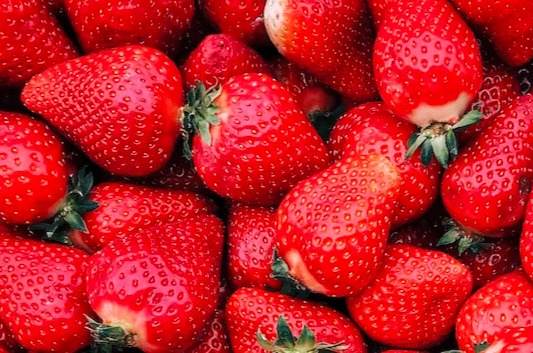W7 Strawberry Update: Peruvian Strawberry Exports Drop 37% YoY in Jan-24, and Türkiye's Silifke District Anticipates High Strawberry Harvest in 2024

Peruvian Strawberry Exports Dropped by 37% YoY in Jan-24
Peruvian strawberry exports in Jan-24 totaled 2.54 thousand tons, marking a 37% year-over-year (YoY) decrease from the 4.04 thousand tons shipped in Jan-23. The strawberries reached ten countries, with the United States (US) and Canada being the primary destinations, each accounting for 36% of the market share. Interglobo Perú SAC and Mebol SAC were the top exporters in Jan-24, with 28% and 20% participation, respectively, and 30 different purchasing companies were registered during Jan-24.
California's Strawberry Industry Faces Challenges Amid Delayed Harvest and Adverse Weather Conditions
A major supplier to the US strawberry industry, California, is experiencing a delayed harvest due to adverse weather conditions. Small farms in California have suffered, losing 60% of their strawberry crops and incurring over USD 1.2 million in damages from storms. Efforts are underway to ensure strawberries are available for Mother's Day. While rain is beneficial for soil preparation, inflation presents a new challenge. Despite these obstacles, the industry remains crucial to local communities, with USD 0.97 of every dollar earned supporting field workers and community initiatives. The start of harvesting in Watsonville on Apr-24 signals a potentially more positive turn for the season.
Supply Disruptions Expected as Rain Hits Strawberry Growing Regions in W7
The International Fresh Produce Association predicts rain in Oxnard, California, and Dover, Florida's strawberry growing regions, from February 18 to February 21, 2024, causing supply reduction and affecting quality. The low production volume will further tighten supplies, leading to a market where demand exceeds supply for two weeks. Despite the current good quality, the rain may cause issues like white shoulders and bruising. Maintaining the cold chain and ordering quick turns is crucial to preserve shelf life and minimize losses.
In Mexico, volume decreases as the season passes its peak, but quality remains good, with reports of white shoulders. This region is expected to help fill the void from West Coast shortages, leading to steady prices and tight supplies. Meanwhile, Markon First Crop (MFC) strawberries are available in Florida. Rain is forecasted for Saturday, February 17, and Sunday, February 18, with good current quality despite reports of white shoulders and uneven sizes. Supplies are expected to be tight at the start of the following week as fields recover from rain, with volume increasing later in the week as weather conditions improve.
Silifke District in Türkiye Expects High Strawberry Harvest in 2024
Strawberry production in Türkiye's Silifke district is increasing, with 70 to 80 thousand tons expected to be harvested from 2 thousand hectares (ha) of land in 2024. The region is known for its quality and accounts for 30% of Türkiye's strawberry production and 60% of its exports. As the harvest progresses, particularly in Apr-24, strawberry availability will increase, providing ample quantities for everyone. The district also plays a significant role in employment, providing income for around 3 thousand families and requiring manual labor, particularly from women, from October until the end of the harvest season in Jul-24.
Kyrgyzstan Explores Strawberry and Raspberry Exports to Qatar, China, and Pakistan
Kyrgyzstan is diversifying its agricultural exports by targeting the markets of Qatar, China, and Pakistan for its strawberries and raspberries. Deputy Prime Minister Bakyt Torobaev unveiled this plan during a press conference on February 15, 2024, emphasizing the need to expand markets for the increasing annual production of these berries. Additionally, the government aims to enhance domestic production across sectors to reduce import dependency.





